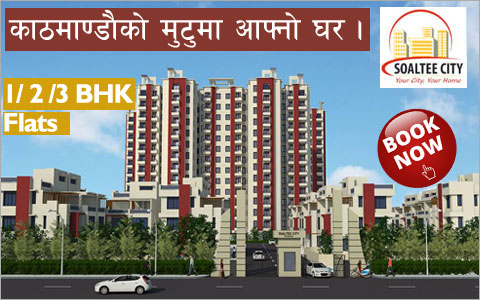National News

Average Nepali households are getting to avail cheaper home and auto loans, as the banks struggling with credit demand crunch have slashed the interest rates heavily.
Of late, the banks have shifted their focus on making home and auto loans more affordable for the consumers to counter the lowered credit demand. However, the rate cuts in lending are also accompanied by similar slash in the deposit rates.
At present, the interest rates for home and auto loans have come down to as low as eight per cent. Five months ago, the lowest rate for these consumer loans stood at 10 per cent. Hence,
average Nepali households can once again afford to buy houses and cars.
“The lowered rates are one of the most tempting factors for most clients looking to purchase houses or cars, and their reaction is pretty much instant in many cases,” said head of corporate affairs at Standard Chartered Bank Nepal, Diwakar Poudel. Standard Chartered Bank is providing home and auto loans at rates as low as eight per cent. In September, the same bank was offering these loans at 10 per cent.
“The change in even one percentage point has visible impact on the EMI that the borrowers have to pay, thus consumers are reacting positively to the interest rate changes,” he added. Consumer loans are repaid based on equated monthly instalments that allow borrower to pay back principal and interest every month.
Moreover, Nabil Bank has also recently unveiled its latest home loan scheme at eight per cent rate. Similarly, another large and established bank — Himalayan Bank — is providing home and auto loans at nine per cent interest.
Currently, the banks are swollen with liquidity, while the demand for industrial and trading loans are refusing to take off. There is more than Rs 70 billion with 31 commercial banks, which is sitting idly as dead assets. Instead of waiting for the corporate loan demand to rise, the banks have lowered rates to target average Nepalis with capacity to repay as ideal borrowers.
In September 2013, the average rate of home loans provided by commercial banks stood at 12 per cent, which by February, 2014 is at 11 per cent. The maximum rates being charged at
present stand at 15 per cent based on the duration of the loan and applicant’s profile — including income, credit history and employment.
However, the reduced consumable loans come with lowered rates on deposits. The one-year fixed deposit rate that was at 6.7 per cent on average is now at 5.8 per cent. Due to excess liquidity and low credit demand, the first line of defence for the banks to cut down on its cost is to reduce deposit rate, which has brought down the deposit rate below inflation level. With inflation at 10 per cent, depositors are actually losing out on the real value of their deposit. On the other hand, interest rate nearing inflation rate is beneficial for the borrowers as their real interest rate stays near zero.
The commercial banks, development banks and finance companies have forwarded loans worth Rs 73 billion by mid-November, 2013.
The amount of such home loans provided by these financial institutions was Rs 65 billion in mid-July, 2013. Likewise, auto loans that are included under hire-purchase loan have reached Rs 56.3 billion as of mid-November, which stood at Rs 50 billion by mid-July, 2013.
source:the himalayan times,3 feb 2014
- 9th Nepal Buildcon International Expo 2024
- Real Estate Expo 2023
- NRB raises housing loan limit to encourage home constructions
- Nepal Rastra Bank (NRB) Monetary Policy 2080-2081
- New Price of Land in Kathmandu Metropolitan City, Nepal
- Capital Gains Tax Rate on Real Estate Transactions in Nepal 2080-81 ( 2023/24 )
- Kathmandu metropolis implements free parking policy for commercial buildings and hospitals

![[X]](https://www.housingnepal.com/images/popup-close-button.png)








































































































































































































































































































































































































































 Facebook
Facebook
 Delicious
Delicious
 Digg
Digg
 Reddit
Reddit
 Stumble Upon
Stumble Upon









